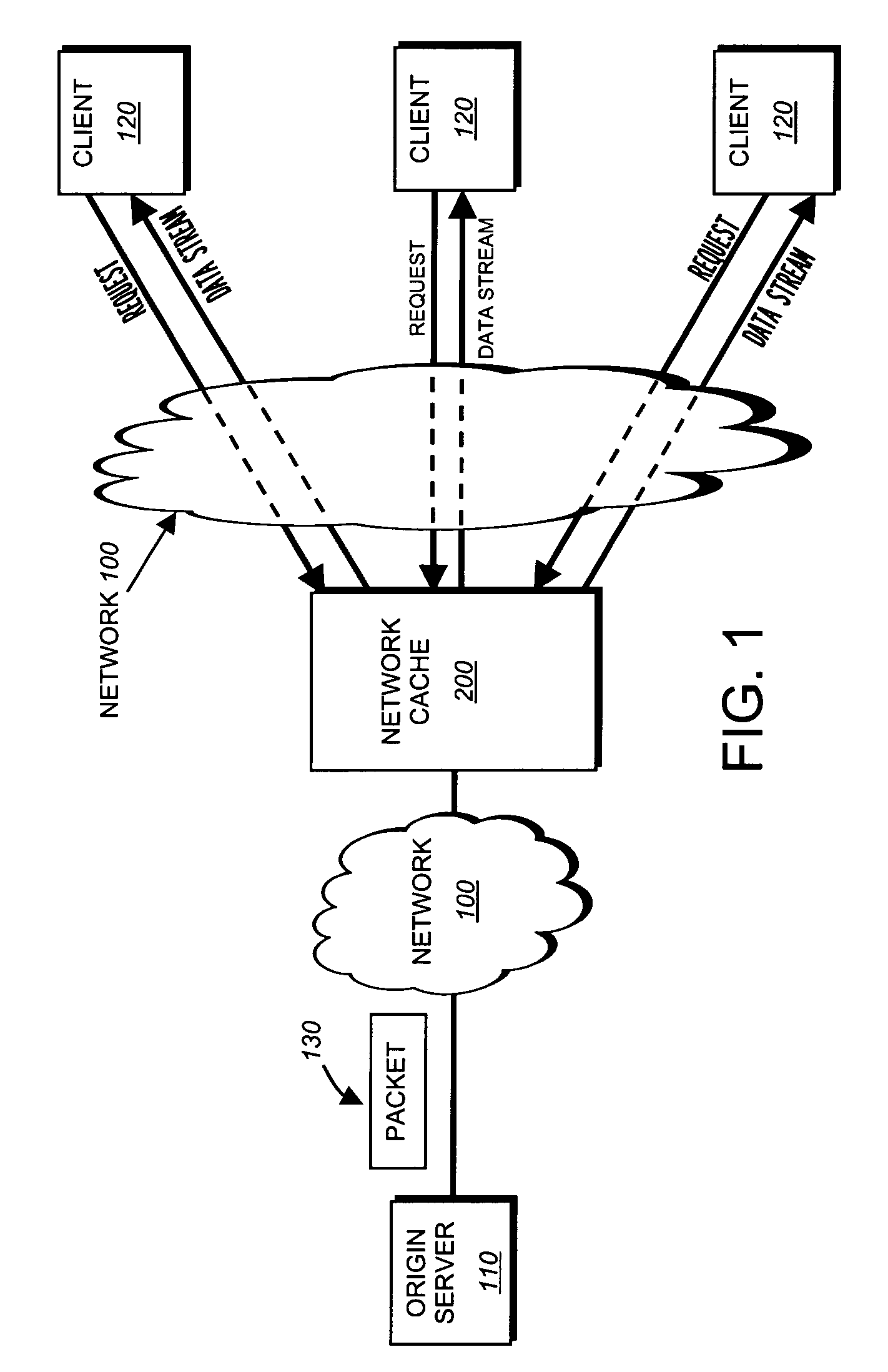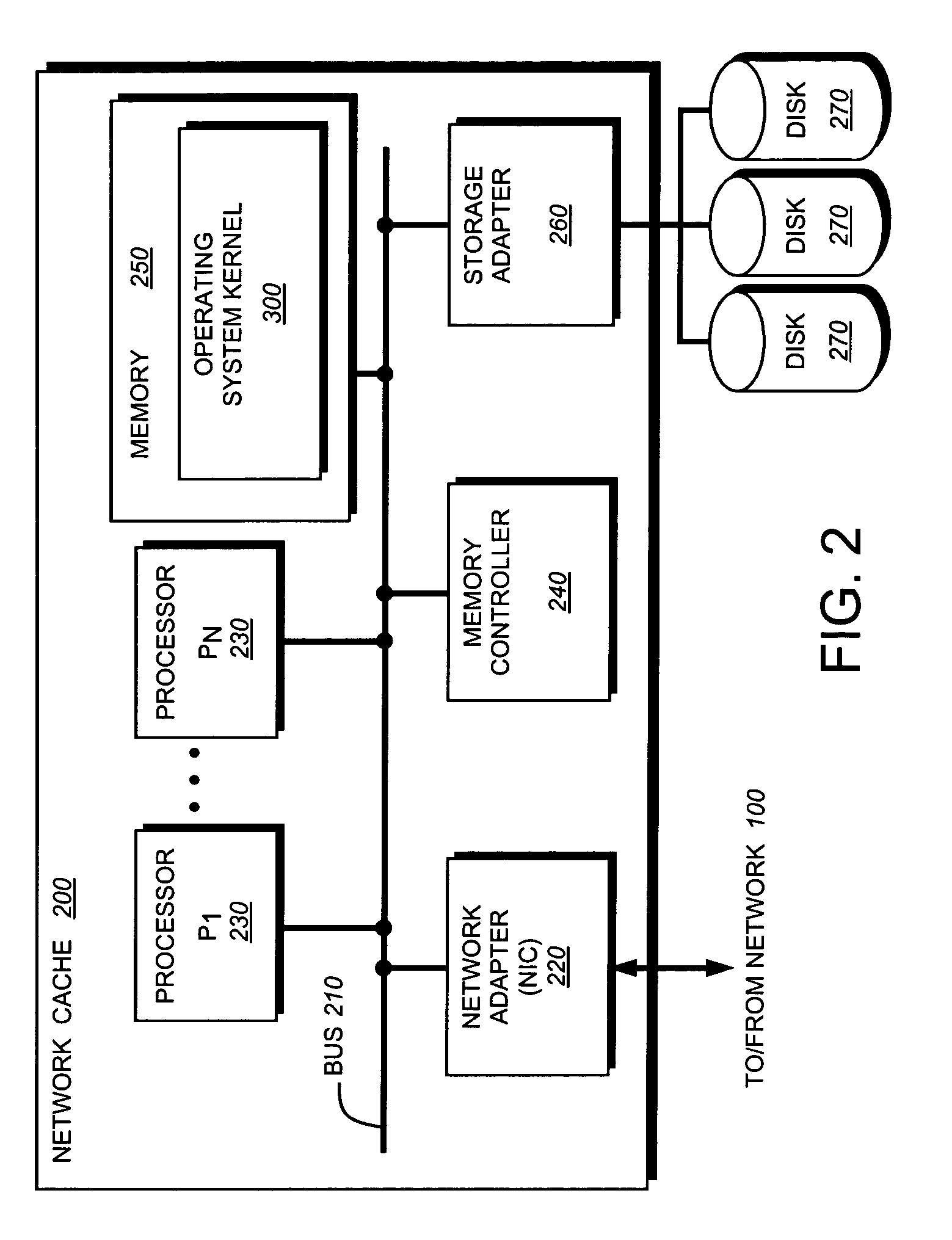Technique for dynamically restricting thread concurrency without rewriting thread code
a technology of concurrency and threads, applied in the field of multi-threaded processes, can solve the problems of mp system problems, process stalling, and new threads typically not allocated many resources, and achieve the effect of reducing traditional amounts of time and programming resources and facilitating scaling for mp systems
- Summary
- Abstract
- Description
- Claims
- Application Information
AI Technical Summary
Benefits of technology
Problems solved by technology
Method used
Image
Examples
Embodiment Construction
A. Networking Environment
[0035]FIG. 1 illustrates a network cache (server) which may be used to implement the present invention. The network cache 200 is coupled to an origin server 110 and a plurality of clients 120 over a network 100. The network cache typically communicates with the origin server and the clients by exchanging discrete data packets 130 over the network. As used herein, a data packet is broadly understood to be a unit of data transmitted over the network. As such, a data packet according to the invention may comprise one or more conventional data packets. Typically, the packets are formatted in accordance with predetermined communication protocols, such as the Transmission Control Protocol (TCP), User Datagram Protocol (UDP) and the Internet Protocol (IP). In this context, a protocol consists of a set of rules defining how packets are communicated. Each data packet generally comprises “payload” data appended to one or more network headers that define the packet's r...
PUM
 Login to View More
Login to View More Abstract
Description
Claims
Application Information
 Login to View More
Login to View More - R&D
- Intellectual Property
- Life Sciences
- Materials
- Tech Scout
- Unparalleled Data Quality
- Higher Quality Content
- 60% Fewer Hallucinations
Browse by: Latest US Patents, China's latest patents, Technical Efficacy Thesaurus, Application Domain, Technology Topic, Popular Technical Reports.
© 2025 PatSnap. All rights reserved.Legal|Privacy policy|Modern Slavery Act Transparency Statement|Sitemap|About US| Contact US: help@patsnap.com



